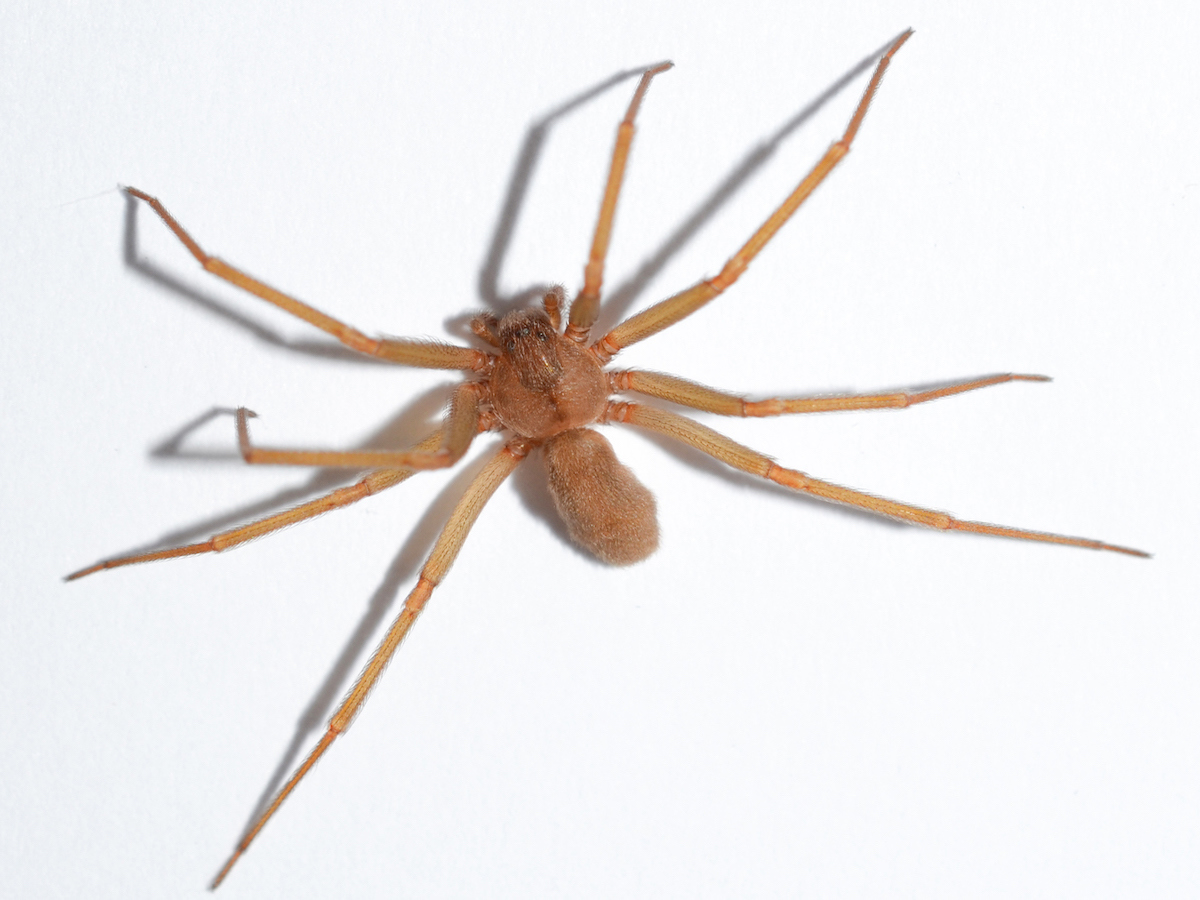All About Brown Recluse Spiders
The Brown Recluse Spider is a potentially dangerous arachnid found in various parts of the U.S. It is important to manage and control this spider due to its venomous bite, which can cause significant health issues. Understanding how to identify and address these spiders can help protect your home and family.
What are Brown Recluse Spiders?
The Brown Recluse Spider, scientifically known as Loxosceles reclusa, is a venomous spider that is part of the Sicariidae family. Commonly referred to as the “violin spider” due to its violin-shaped mark on its back.
Brown Recluse Spiders are known for their reclusive behavior, often hiding in dark, undisturbed areas. They are typically solitary and prefer environments that are dry and warm.
How to Identify Brown Recluse Spiders
Appearance:
- Color: Light brown body.
- Markings: Distinct violin-shaped mark on the cephalothorax (head and thorax).
- Eyes: Six eyes arranged in a semicircle (different from the eight eyes of most spiders).
- Legs: Long and slender, often pale in color.
- Size: Typically 6 to 10 millimeters (0.24 to 0.39 inches) in body length, with a leg span up to 30 millimeters (1.18 inches).
Similar Pests: Brown Recluse Spiders can be mistaken for other brown spiders, but their unique violin-shaped marking and six eyes are key identifying feature
Activity and Seasonality
Active Seasons: Brown Recluse Spiders are active year-round but are more commonly encountered during warmer months when they might venture into homes in search of cooler, darker places.
Lifecycle: The Brown Recluse Spider goes through three life stages: egg, spiderling, and adult. The entire lifecycle can span several months to a year.
Where to Find Brown Recluse Spiders in or Around Your House
Common Habitats: Inside, they are often found in basements, attics, closets, and under furniture. Outside, they prefer secluded areas such as piles of wood, leaf litter, or rock crevices.
Specific Hiding Spots: Common hiding spots include behind or under furniture, inside shoes, and in undisturbed corners.
How to Get Rid of Brown Recluse Spiders
Immediate Action: If you spot a Brown Recluse Spider, carefully remove it using a jar or container. Avoid direct contact to prevent bites.
Professional Treatments: Pest control services can offer targeted treatments such as insecticide applications and habitat modification to address infestations effectively.
DIY Methods: Regular cleaning, vacuuming, and using spider repellents can help reduce the likelihood of an infestation. Seal cracks and gaps around your home to minimize entry points.
How to Prevent Brown Recluse Spiders
Preventive Measures:
- Seal cracks and crevices around windows, doors, and foundation.
- Use weather stripping on doors and windows.
- Keep storage areas, closets, and basements clean and clutter-free.
- Store clothing and blankets in sealed containers.
Home Maintenance:
- Regularly vacuum and dust to remove spider webs and egg sacs.
- Inspect and clean behind furniture, appliances, and other hidden areas.
- Maintain outdoor lighting to deter insects that attract spiders.
Long-term Strategies:
- Trim vegetation and keep plants away from the home’s exterior.
- Install door sweeps and screens on windows to prevent spiders from entering.
- Regularly inspect and repair any structural damage to the home.
Professional Assistance:
- Contact a pest control professional for comprehensive inspection and treatment.
Conclusion
Brown Recluse Spiders can pose a health risk and are best managed with a combination of preventive measures and professional pest control. Understanding their behavior and habits can help you keep your home safe.
If you’re dealing with a Brown Recluse Spider infestation, contact Pest Control Consultants today for a free consultation and effective treatment plan. Our experts at Pest Control Consultants are here to help you manage and eliminate these pests safely and efficiently.
